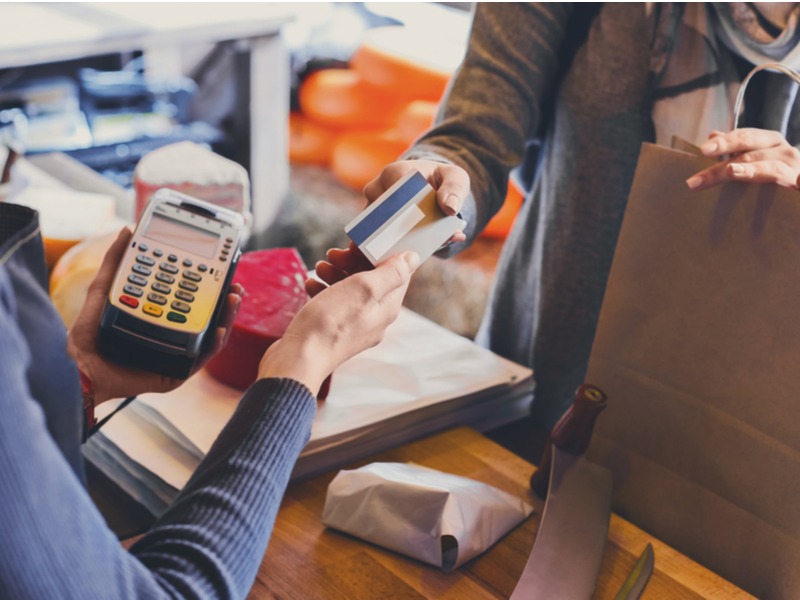With lockdown easing across the UK, many retailers are expecting to return to growth and make up for revenues lost over the past year.
However, with lingering uncertainty over the impact of new variants of Covid-19, and projections that up to 200,000 retail jobs are to be lost in 2021, the recovery will be uneven, and not everyone will benefit.
In our webinar ‘Open for business: How do retail operators gain a competitive edge in the new economy’ which took place on 12 May, retail and hospitality leaders shared their expertise on the strategies small businesses need to employ over the coming months to return to profitability.
The webinar panel included:
- Michael Weedon, Chair FSB Retail and High Streets Policy Unit, Federation of Small Businesses
- Adam Wills, Co-founder and Director, Crosstown Dough
- Ciaran O’Donnell, Founder, The Virtual FD
- Andrew Ball, Partner and Head of Hospitality, Haysmacintyre
Here are five key takeaways to help retailers get back to business:
Debt management will be key over the coming years
In 2020 most small businesses in hospitality and retail were focused on surviving the economic fallout of the pandemic. To that end, many took out loans through the government-backed Coronavirus Business Interruption Loan Scheme (CBILS).
However, according to Andrew Ball of Haysmacintyre, the result is that some businesses are significantly overleveraged:
‘The beauty of CBILS was that there was no repayment for 12 months. The downside is that some people were living on the hope that things will recover, and that they will be able to repay those loans when they reopen. There are certainly people in the hospitality sector who over the next two to three years will effectively be working for the bank.’
He went on to add that businesses that had put in the work to negotiate their terms with landlords and suppliers, and taken on loans sensibly, are the ones who will be able to rebuild.
Finance teams need to become more strategic
The pandemic forced finance teams to focus more on strategy rather than operations, as they had to consider the implications of temporary closure or pivoting their product offering to reflect current realities. The road to recovery will require them to continue planning ahead.
According to Andrew Ball:
‘They need to keep reforecasting. The finance function has had to become more strategic and less operational. It’s about saving cash, forecasting and striving for growth. They need to come up with new ideas, and stop the bad ideas – ideas that won’t be driving profitability’.
Businesses need to identify key areas where they can add value for customers
Part of this increased focus on more strategic planning, is looking at which areas of your business you can add value to increase performance.
Ciaran O’Donnell of The Virtual FD says:
‘The mode has to shift towards driving value. Who are new customers you’re looking to attract, existing customers you want to retain, and what is their lifetime value?’
Answering these questions can help businesses get to profitability quicker, and start paying back some of the debt accrued over the pandemic. He warns that neglecting this forward focus can potentially lead to failure for those businesses that don’t embrace this challenge.
He urged businesses to make full use of the insights gained from using digital solutions like Shopify, which were not possible in a brick-and-mortar environment:
‘Previously we were selling through retail with no direct relationship with the end customer. Now we can use the data insights that are available through an app like Shopify, that are instantly available to us. Things like customer return rates, and loyalty. There are so many levers for businesses to think about how we actually extend the relationship.’
Digital solutions can help businesses adapt to a market that has structurally changed
Over the past year, what consumers expect of retail and hospitality businesses has changed as new service and delivery options became available. Through using digital solutions such as SLERP or Shopify, many small businesses were able to reach these customers despite curbs on face-to-face trading.
Adam Wills of Crosstown Dough says that small businesses should consider the long-term potential of some of the pivots they had to make out of necessity during the pandemic:
‘If you discovered that there was national demand for your small business, which gave you an opportunity to serve more people than what you could if you were running it in the traditional sense, you should give consideration to whether there are any long-term opportunities to use technology’.
Technology is essential to helping time-poor businesses become more strategic
Micheal Weedon of the Federation of Small Businesses agrees that SMEs need to adapt to the new expectations of customers by adopting digital tools where possible. However, he also warned that for many small businesses on the high street, a lack of time and expertise is a big barrier to adoption.
‘Small businesses may or may not be cash poor, but they are all time poor. Where there is growth available by using new technologies, integrating different ways in which they sell to and serve their customers, it takes time and expertise to do that’.
However, he emphasizes that the opportunities that embracing technology can bring is worth investing in:
‘Businesses can change from a model where they deal with people in stores, to one where they can communicate with them on their phones and PCs 24/7. Customers can place orders with you while you’re running your other business. And you can get all of this to flow through to your analytics and your accounts’.
Click here to watch the webinar on demand
Listen to the full conversation and get even more great insights on how you can get started on your own recovery.










